
By- Vivek Ranaut
INTRODUCTION
With economic and strategic interests getting involved in the Bay of Bengal as part of geopolitics, BIMSTEC as a capable sub-regional group is getting much attention recently. This produces an opportunity for India to renew its strategy regarding BIMSTEC. To compete with China, India has to upgrade both its soft and hard infrastructure in the region to gain strategic advantage. Rising anti-China feelings in developed countries provide an opportunity for India to re-establish its ancient trade networks in the region. India should take a positive approach in integrating the region, insisting on cooperation instead of rivalry, in the context of economic and trade associations with BIMSTEC members.
In recent years, India has been replaced by China as the biggest trade and investment partner of many countries of Bay of Bengal region. Under its ambitious BRI policy, it has invested in several infrastructure projects in India’s neighborhood and it is the largest foreign investor in Pakistan, Sri Lanka and Maldives. Therefore, India must re-assess its trade, technology and investment relations with its neighboring countries. Many experts are of the opinion that since BIMSTEC has deficiency in financial and human resources, India should deploy extra resources and engage in initiatives that would boost pro-India energy in BIMSTEC, thus pushing back Beijing’s moves to surround India. Creating regional value chains and concluding free trade agreement are necessary to achieve that objective.
INDIA AND BIMSTEC: TRADE PERSPECTIVE
India had the largest trade share among all BIMSTEC members in the year 2018 (40.26 percent). India also had the leading share in BIMSTEC’s global trade (55.42 percent). India is the biggest trading partner for all other BIMSTEC countries except for Myanmar. Out of total trade with the other BIMSTEC countries, Bangladesh’s 87 percent of trade, Bhutan’s 81 percent of trade, Myanmar’s 21 percent of trade, Nepal’s 97 percent of trade, Sri Lanka’s 86 percent of trade and Thailand’s 57 percent of trade was with India. For India, Thailand is the largest trading partner (32 percent).
Bay of Bengal is a significant trading route for many nations. Strait of Malacca, the southern end of the bay, witness about 25 percent of the world’s traded goods pass through it. BIMSTEC is a market of roughly 22.2% of global population (close to 1.7 billion people). In 2018, BIMSTEC trade was 3.8% of global trade (1.50 trillion dollars), while intra-regional trade equaled 94.61 billion dollars. BIMSTEC’s intra-regional trade amounted to only 6.30% out of the total global trade. Hence, BIMSTEC is a much less integrated region as compared to ASEAN (24% intra-regional trade) or EU (64 % intra-regional trade). There is a big opportunity for the improvement of intra-regional trade which is apparent from the region’s growing purchasing power, stimulated by high GDP growth rates and the increasing percentage of young people in the population.
CREATING REGIONAL VALUE CHAINS (RVCs)
COVID-19 pandemic has shattered the world order and globalization is under deep pressure. It has shown us the flaws inside established global production and supply chains which needs much alteration. In this scenario, regional value chains with solid defenses against disruptions can be an attractive substitute. As present supply chain systems undergo reshuffling, there is a need for India to form new regional supply chains by placing itself as a vital player. India can form regional value chains with BIMSTEC member nations which will help in quick economic recovery in the post-pandemic era. Amidst the accusations of COVID-19 pandemic originating from China and questioning its way of managing it, investors have started to think about moving their companies to BIMSTEC countries like India, Thailand or Bangladesh. If the region is successful in attracting foreign companies, it will witness vast investments, new jobs and shifting value chains to domestic economies.
RVCs don’t demand strict norms like global value chains because the products can be made according to the local market demand and similar consumption patterns of the region. After RVCs are set up, the products can be exported to developed countries’ markets as well. For RVCs to be successful, India needs to speed up the implementation of rules for harmonisation of regulations and technical standards, remove tariff and non-tariff barriers and improve its cross border infrastructure so that trade between countries can take place swiftly.
There can be growth poles for the RVC and India along with Thailand can be those growth poles in the Bay of Bengal region. They can function as center of RVCs and act as a leader in distribution of resources by directing foreign investments into the region. The two growth poles can create an important pathway to trigger manufacturing growth in the region which is mainly agricultural and this would transform lives and enhance incomes of the people. The RVC can be made in the context of local development needs and can spread knowledge and transfer technologies within the region. RVCs will comprise of native small and medium industries who will contribute in making the region’s industrial base and help in generating employment.
For example, locating a RVC supply chain in the multinational Banglabandha-Phulbari-Kakarbhitta stretch or alongside Dalu-Tura-Goalpara-Gelephu multimodal trade and transport corridors or the Imphal-Moreh-Tamu segment of the Asian Highway can help invigorate the BIMSTEC economies and increase intra-regional trade.
There is a potential of cooperation between Sri Lanka, Myanmar, India and Thailand in Gems and jewellery production since Myanmar, Sri Lanka and Thailand produce very good quality gems and India specializes in cutting and polishing gem stones as well as making gold, silver and studded jewellery. Similarly, in production of bamboo items like furniture, cloth and artefacts, there could be a RVC between Thailand, Bhutan, Myanmar and North East India. For herbal products, India, Bhutan and Nepal can form an RVC. For garments, there is a big potential for RVC between India, Bangladesh and Sri Lanka. In leather goods, there is potential RVC between India, Bangladesh and Thailand.
India should focus on manufacturing and build an elaborate industrial hub-and-spoke structure within the region. Indian policymakers and strategists should move on from stubborn ‘Make in India and Exported from India’ measures to ‘manufactured in and/or serviced from a cross-border multi-national local economic zone’ approach. It would be better for India to take a holistic view and focus on regional integration over national exports.
Investing tactically to create BIMSTEC-focused RVCs will aid in producing economic interdependence, which will make bilateral relations healthy between the countries and help in achieving strategic objectives. Hence, India can set itself in a better position to handle geopolitical turbulence and interfering extra-regional powers by stimulating and developing BIMSTEC value chains. With anti-China sentiments getting louder, India have a great prospect to participate with BIMSTEC nations by generating RVCs. BIMSTEC can learn from European Union and make their economies close to each other to reduce mutual mistrust and help weaken the effect of extra-regional bodies and non-state agents. The whole region can become more stable and eye-catching in terms of geopolitically and economically by creating new value chains.
BIMSTEC FTA
The BIMSTEC Free Trade Area (FTA) framework agreement which was signed in February 2004 included 6 constituent agreements—Agreement on Trade in Goods, Agreement on Trade Facilitation, Agreement on Rules of Origin and Operational Certification Procedures, Agreement on Trade in Services, Agreement on Cooperation and Mutual Assistance in Customs Matters and Agreement on Investment. It deals with issues like developing mutual recognition arrangements; liberalisation of trade in services; progressive elimination of tariffs and non-tariff barriers; establishing an open and competitive investment regime; establishing appropriate mechanisms for the implementation and simplification of customs procedures; and establishing effective trade and investment facilitating measures.
The Free Trade Agreement will link Southeast Asia to South Asia and will provide all BIMSTEC countries entry to a larger market. BIMSTEC FTA is going to be an innovative step in terms of trade growth and establishing value chains in the region. There are many benefits of an FTA like improved economic growth, transfer of technology and widespread economic reforms. Free trade makes market efficient, generates employment, lowers prices and reduces poverty. It will increase revenue by bringing informal trade under official channels through barrier-free trade provisions. Increased trade and connectivity will reduce the seclusion of northeast India, Nepal and Bhutan. There are some shortcomings of FTAs as well such as potential job outsourcing, crowding out of local business and decreased customs revenue but all these drawbacks are temporary and the advantages of liberalization and open markets are well documented and well-known. The important thing is to provide safeguards against possible difficulties, clear policies and liberal administration that sustain business and economic growth.
BIMSTEC FTA is particularly important for India as it has decided not to be a part of Regional Comprehensive Economic Partnership (RCEP). But China is a member of RCEP and will continue to benefit from it. So if India has to counter the Chinese influence, it really has to put efforts on the conclusion of BIMSTEC FTA. It has been recommended that to rejuvenate economy and external economic relationships, India should push for speedy conclusion and enforcement of FTA. This would create opportunities for investment, help in detecting priority projects on transportation, trade, energy, tourism and agriculture through collective action which will boost production, local investment, liberalize trade and enable economic integration of the region. Initiatives like business-friendly customs, liberal transit, transport corridors, etc. help in cutting of barriers and catalyze trade and production in the region. Conclusion of the BIMSTEC FTA can be done through Indian government-led investments in crafting hyper-local industrial value chains to unite particular micro-regions together economically.
Trade negotiating committee of BIMSTEC has held 21 rounds of negotiations until now but it has failed to reach any conclusion due to absence of agreement on crucial matters. With the economies of BIMSTEC countries lingering through the devastating effect of COVID-19, the group can also settle for a limited FTA, the first step to grow trade, instead of no agreement at all. BIMSTEC must take hold of this crucial moment in history and display concrete goals and results by increasing its attention on key points of cooperation—investment, trade, people-to-people exchanges, connectivity, Blue Economy and energy—along with the higher institutional capability of its secretariat. BIMSTEC must sign an FTA, even if it is restricted in scope.
CONCLUSION
With the global political economy rapidly changing, BIMSTEC should focus on building more meaningful regional cooperation rather than just seeking narrow national interests. Unless the member states take actions now, they will waste a big prospect to draw global and regional investment that is looking for an alternate to global value chains. India has enough motives to take a leadership role with respect to crafting a BIMSTEC FTA and to create a regional value chain hub with other member nations. BIMSTEC FTA has to be taken as priority by policymakers to help regional value chains to materialize in the region. BIMSTEC need to discover a path to realize its goal to enhance regional cooperation and integrate with the dynamic global order, for which a more productive regionalized attitude is needed. India today has both the political ability and the vision to be a leader in this transformation and it is well placed to take advantage of the current trade insecurities by providing incentives to attract global investment. It can lead in utilizing the current geopolitical momentum to transform BIMSTEC into a powerful regional group.
References
- Suparna Karmakar, “Reimagining India’s Engagement with BIMSTEC,” ORF Issue Brief No. 404, Observer Research Foundation, September 2020.
2. Ibid.
3. Damaru Ballabha Paudel, “Enhancing Trade in the BIMSTEC Region”, in Rakhahari Chatterji and Anasua Basu Ray Chaudhury (Eds.), Reimagining BIMSTEC: Strengthening Regional Solidarity Across the Bay of Bengal, Observer Research Foundation, February 2021.
4. Supra note 3
5. Nilanjan Ghosh, “Trade and Investment in BIMSTEC: Challenges and opportunities”, Rakhahari Chatterji and Anasua Basu Ray Chaudhury (Editors), Reimagining BIMSTEC: Strengthening Regional Solidarity Across the Bay of Bengal, February 2021, Observer Research Foundation.
6. Jayshree Sengupta, “Entering regional value chain is better for India”, Observer Research Foundation. 2018. Available at: http://www.orfonline.org/expert-speaks/entering-regional-value-chain-is-better-for-india/
7. Ibid.
8. Supra note 1
9. Supra note 5
10. Supra note 1
11. Ibid.
12. Supra note 3
13. Ibid.
14. Dr. A. Didar Singh, “Rationale for a BIMSTEC Free Trade Agreement”, DPG Regional Brief Vol. 3 Issue 15, 27 August 2018.
15. Supra note 3
16. Supra note 13
17. Supra note 1
18. Supra note 3
19. Suthiphand Chirathivat, “Rethinking enhanced trade within BIMSTEC: An ASEAN Perspective”, in Rakhahari Chatterji and Anasua Basu Ray Chaudhury (Eds.), Reimagining BIMSTEC: Strengthening Regional Solidarity Across the Bay of Bengal, Observer Research Foundation, February 2021.

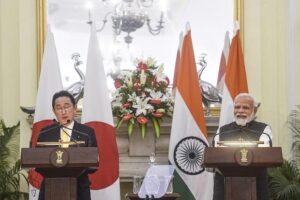

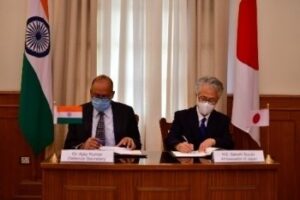
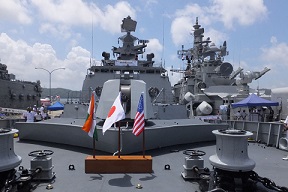
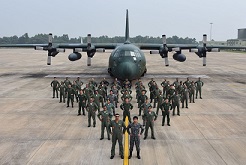



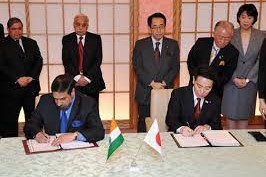

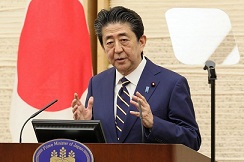
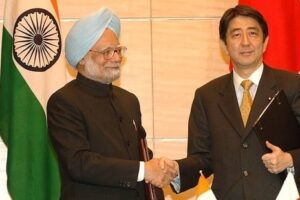
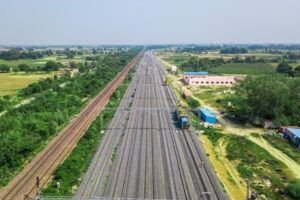
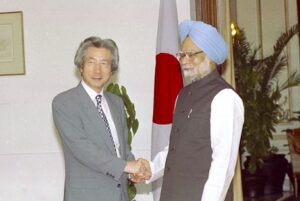
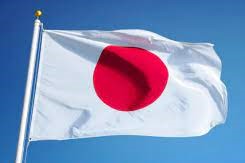
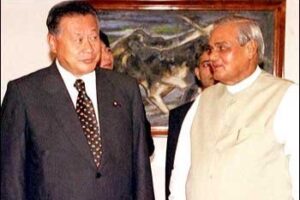
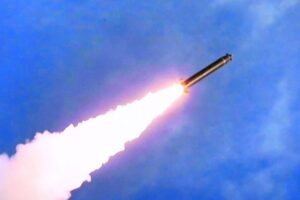




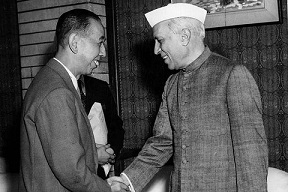



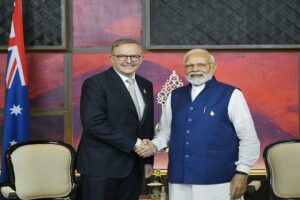



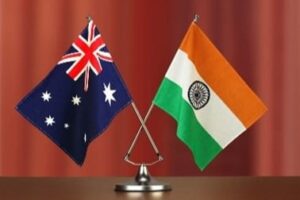
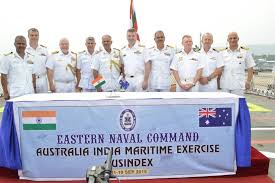

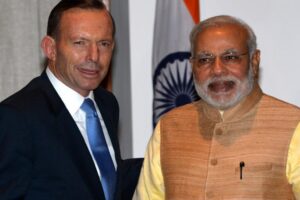





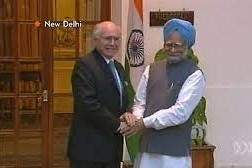
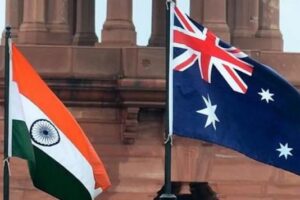


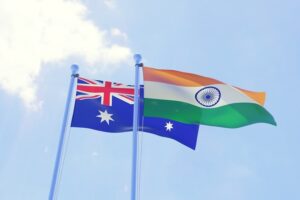

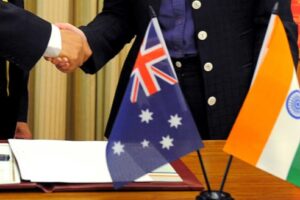

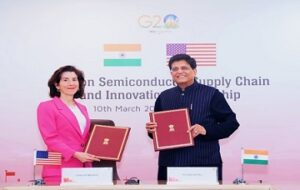
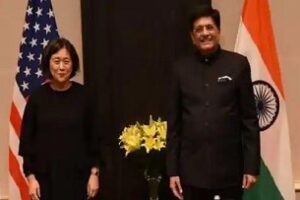
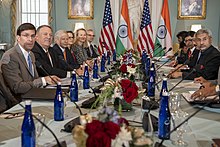
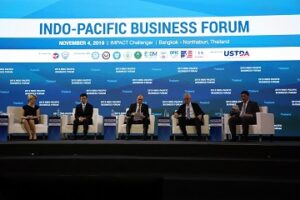
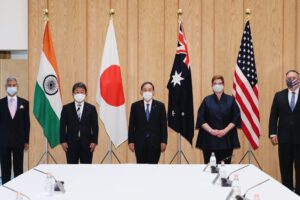

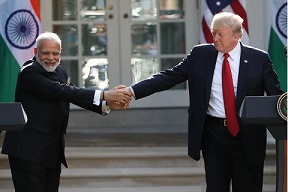
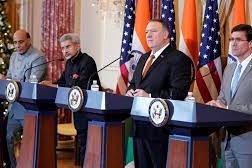

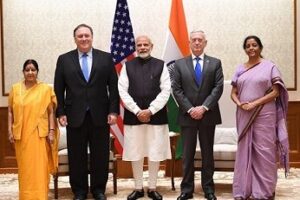
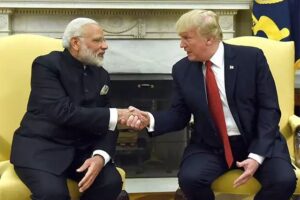
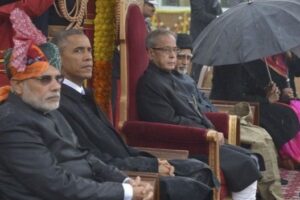

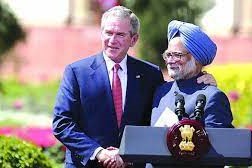
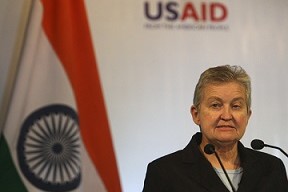
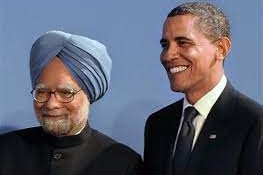
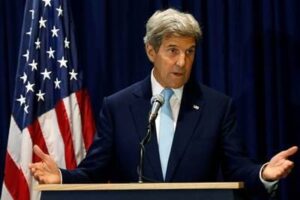

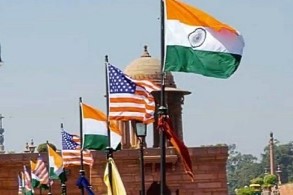
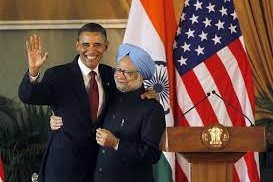


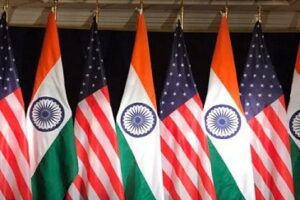
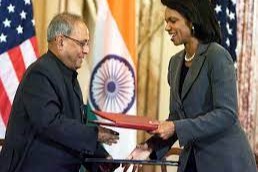

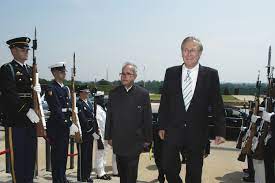


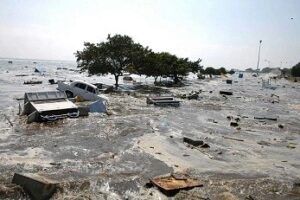

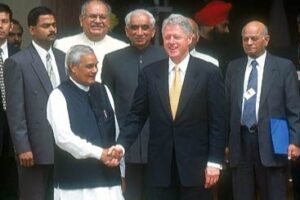
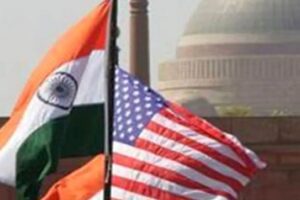
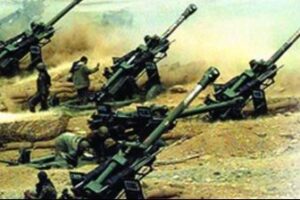
 onducted a total of five underground nuclear tests, breaking a 24-year self-imposed moratorium on nuclear testing. Pakistan followed, claiming 5 tests on May 28, 1998, and an additional test on May 30. The unannounced tests created a global storm of criticism, as well as a serious setback for decades of U.S. nuclear nonproliferation efforts in South Asia. On May 13, 1998, President Clinton imposed economic and military sanctions on India, mandated by Section 102 of the Arms Export Control Act (AECA), and applied the same sanctions to Pakistan on May 30. Some effects of the sanctions on India included: termination of $21 million in FY1998 economic development assistance; postponement of $1.7 billion in lending by the International Financial Institutions (IFI), as supported by the Group of Eight (G-8) leading industrial nations; prohibition on loans or credit from U.S. banks to the government of India; and termination of Foreign Military Sales under the Arms Export Control Act. Humanitarian assistance, food, or other agricultural commodities are excepted from sanctions under the law.
onducted a total of five underground nuclear tests, breaking a 24-year self-imposed moratorium on nuclear testing. Pakistan followed, claiming 5 tests on May 28, 1998, and an additional test on May 30. The unannounced tests created a global storm of criticism, as well as a serious setback for decades of U.S. nuclear nonproliferation efforts in South Asia. On May 13, 1998, President Clinton imposed economic and military sanctions on India, mandated by Section 102 of the Arms Export Control Act (AECA), and applied the same sanctions to Pakistan on May 30. Some effects of the sanctions on India included: termination of $21 million in FY1998 economic development assistance; postponement of $1.7 billion in lending by the International Financial Institutions (IFI), as supported by the Group of Eight (G-8) leading industrial nations; prohibition on loans or credit from U.S. banks to the government of India; and termination of Foreign Military Sales under the Arms Export Control Act. Humanitarian assistance, food, or other agricultural commodities are excepted from sanctions under the law. 
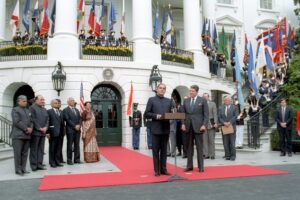



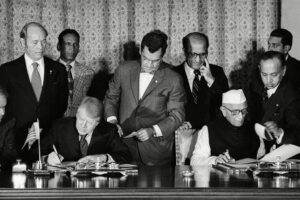
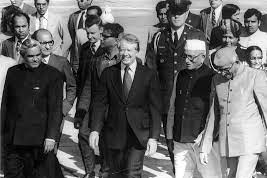

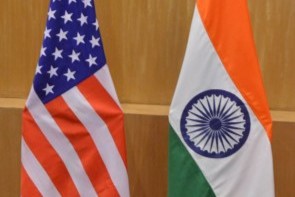



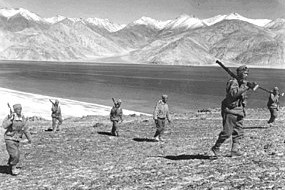

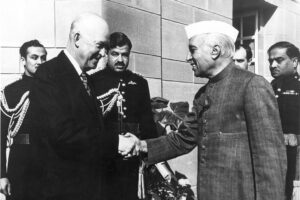

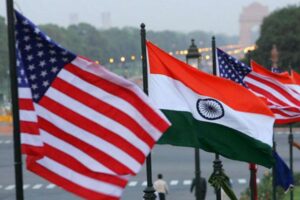
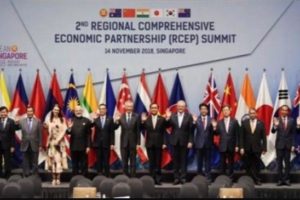 The first ministerial level meeting of QUAD was held on the sidelines of the United Nations General Assembly in New York. Before this, the QUAD had
The first ministerial level meeting of QUAD was held on the sidelines of the United Nations General Assembly in New York. Before this, the QUAD had AusIndEx is an exercise between India and Australia which was first held in 2015.The Australian
AusIndEx is an exercise between India and Australia which was first held in 2015.The Australian 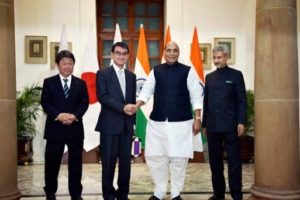



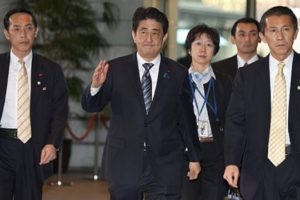

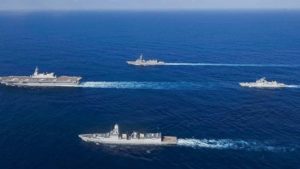

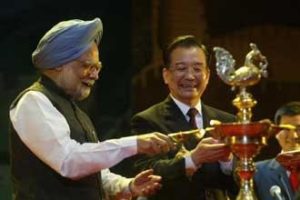 On recommendations of the Japanese government, the four countries met at Manila, Philippines for ASEAN Regional Forum (ARF) originally, but also ended up having a meeting of what we call the first meeting of four nation states on issues of
On recommendations of the Japanese government, the four countries met at Manila, Philippines for ASEAN Regional Forum (ARF) originally, but also ended up having a meeting of what we call the first meeting of four nation states on issues of 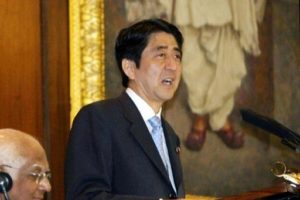 On his official visit to India, Japanese PM Mr. Shinzo Abe reinforced the ties of two nations, i.e., Japan and India with his famous speech about
On his official visit to India, Japanese PM Mr. Shinzo Abe reinforced the ties of two nations, i.e., Japan and India with his famous speech about  In 2007, Japanese President Shinzo Abe resigned from his post citing health reasons. This had a significant impact on QUAD as he was the architect & advocate of QUAD. His successor, Yasuo Fukuda, did not take up QUAD with such zeal leading to dormancy of the forum. (
In 2007, Japanese President Shinzo Abe resigned from his post citing health reasons. This had a significant impact on QUAD as he was the architect & advocate of QUAD. His successor, Yasuo Fukuda, did not take up QUAD with such zeal leading to dormancy of the forum. (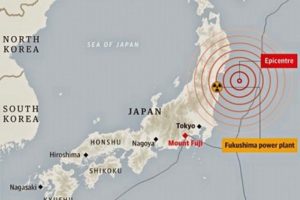 Japan earthquake and tsunami of 2011, also called Great Sendai Earthquake or Great Tōhoku Earthquake, was a 9.0 magnitude earthquake which struck below the floor of the Western Pacific at 2:49 PM. The powerful earthquake affected the northeastern coast of Honshu, Japan’s main island, and also initiated a series of large tsunami waves that devastated coastal areas of Japan, which also led to a major nuclear accident. Japan received aid from India, US, Australia as well as other countries. US Navy aircraft carrier was dispatched to the area and Australia sent search-and-rescue teams.
Japan earthquake and tsunami of 2011, also called Great Sendai Earthquake or Great Tōhoku Earthquake, was a 9.0 magnitude earthquake which struck below the floor of the Western Pacific at 2:49 PM. The powerful earthquake affected the northeastern coast of Honshu, Japan’s main island, and also initiated a series of large tsunami waves that devastated coastal areas of Japan, which also led to a major nuclear accident. Japan received aid from India, US, Australia as well as other countries. US Navy aircraft carrier was dispatched to the area and Australia sent search-and-rescue teams. 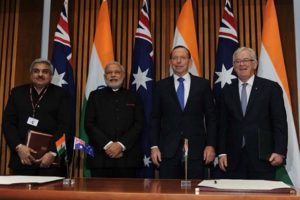 India and Australia signed the
India and Australia signed the  The India-Japan Agreement for Cooperation in the Peaceful Uses of Nuclear Energy was signed on 11 November, 2016 and came into force on 20 July, 2017 which was representative of strengthening ties between India and Japan. Diplomatic notes were exchanged between Dr. S. Jaishankar and H.E. Mr. Kenji Hiramatsu, Ambassador of Japan to India. (
The India-Japan Agreement for Cooperation in the Peaceful Uses of Nuclear Energy was signed on 11 November, 2016 and came into force on 20 July, 2017 which was representative of strengthening ties between India and Japan. Diplomatic notes were exchanged between Dr. S. Jaishankar and H.E. Mr. Kenji Hiramatsu, Ambassador of Japan to India. (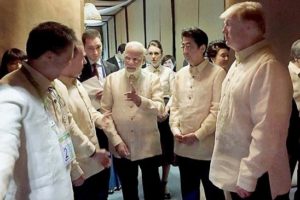 The foreign ministry
The foreign ministry The Officials of QUAD member countries met in Singapore on November 15, 2018 for consultation on regional & global issues of common interest. The main discussion revolved around connectivity, sustainable development, counter-terrorism, maritime and cyber security, with the view to promote peace, stability and prosperity in the
The Officials of QUAD member countries met in Singapore on November 15, 2018 for consultation on regional & global issues of common interest. The main discussion revolved around connectivity, sustainable development, counter-terrorism, maritime and cyber security, with the view to promote peace, stability and prosperity in the 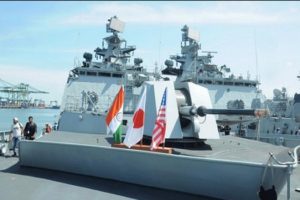 The 23rd edition of trilateral Malabar maritime exercise between India, US and Japan took place on 26 September- 04 October, 2019 off the coast of Japan.
The 23rd edition of trilateral Malabar maritime exercise between India, US and Japan took place on 26 September- 04 October, 2019 off the coast of Japan.  After the first ministerial level meeting of QUAD in September, 2019, the senior officials of US, Japan, India and Australia again met for consultations in Bangkok on the margins of the East Asia Summit. Statements were issued separately by the four countries. Indian Ministry of External Affairs said “In statements issued separately by the four countries, MEA said, “proceeding from the strategic guidance of their Ministers, who met in New York City on the sidelines of the UN General Assembly recently, the officials exchanged views on ongoing and additional practical cooperation in the areas of connectivity and infrastructure development, and security matters, including counterterrorism, cyber and maritime security, with a view to promoting peace, security, stability, prosperity in the Indo-Pacific region.”
After the first ministerial level meeting of QUAD in September, 2019, the senior officials of US, Japan, India and Australia again met for consultations in Bangkok on the margins of the East Asia Summit. Statements were issued separately by the four countries. Indian Ministry of External Affairs said “In statements issued separately by the four countries, MEA said, “proceeding from the strategic guidance of their Ministers, who met in New York City on the sidelines of the UN General Assembly recently, the officials exchanged views on ongoing and additional practical cooperation in the areas of connectivity and infrastructure development, and security matters, including counterterrorism, cyber and maritime security, with a view to promoting peace, security, stability, prosperity in the Indo-Pacific region.” US 2+2 Ministerial Dialogue was held on 18 December, 2019, in Washington DC. Secretary of State Michael R. Pompeo and Secretary of Defense Mark T. Esper will host Indian Minister of External Affairs Dr. S. Jaishankar and Minister of Defense Shri Rajnath Singh. The discussion focussed on deepening bilateral strategic and defense cooperation, exchanging perspectives on global developments, and our shared leadership in the Indo-Pacific region.The two democracies signed the Industrial Security Annex before the 2+2 Dialogue. Assessments of the situation in Afghanistan, Pakistan, Nepal, Sri Lanka, and the Indian Ocean region in general were shared between both countries. (
US 2+2 Ministerial Dialogue was held on 18 December, 2019, in Washington DC. Secretary of State Michael R. Pompeo and Secretary of Defense Mark T. Esper will host Indian Minister of External Affairs Dr. S. Jaishankar and Minister of Defense Shri Rajnath Singh. The discussion focussed on deepening bilateral strategic and defense cooperation, exchanging perspectives on global developments, and our shared leadership in the Indo-Pacific region.The two democracies signed the Industrial Security Annex before the 2+2 Dialogue. Assessments of the situation in Afghanistan, Pakistan, Nepal, Sri Lanka, and the Indian Ocean region in general were shared between both countries. (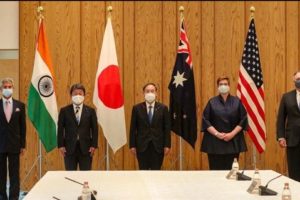 The foreign ministers of QUAD continued their discussions from the last ministerial level meeting in 2019, on 6 October, 2020. While there was no joint statement released, all countries issued individual readouts. As per the issue readout by India, the discussion called for a coordinated response to the challenges including financial problems emanating from the pandemic, best practices to combat Covid-19, increasing the resilience of supply chains, and enhancing access to affordable vaccines, medicines and medical equipment. There was also a focus on maintaining stability in the Indo-Pacific region amidst growing tensions. Australian media release mentions “We emphasised that, especially during a pandemic, it was vital that states work to ease tensions and avoid exacerbating long-standing disputes, work to counter disinformation, and refrain from malicious cyberspace activity. Ministers reiterated that states cannot assert maritime claims that are inconsistent with international law, particularly the United Nations Convention on the Law of the Sea (UNCLOS).”
The foreign ministers of QUAD continued their discussions from the last ministerial level meeting in 2019, on 6 October, 2020. While there was no joint statement released, all countries issued individual readouts. As per the issue readout by India, the discussion called for a coordinated response to the challenges including financial problems emanating from the pandemic, best practices to combat Covid-19, increasing the resilience of supply chains, and enhancing access to affordable vaccines, medicines and medical equipment. There was also a focus on maintaining stability in the Indo-Pacific region amidst growing tensions. Australian media release mentions “We emphasised that, especially during a pandemic, it was vital that states work to ease tensions and avoid exacerbating long-standing disputes, work to counter disinformation, and refrain from malicious cyberspace activity. Ministers reiterated that states cannot assert maritime claims that are inconsistent with international law, particularly the United Nations Convention on the Law of the Sea (UNCLOS).”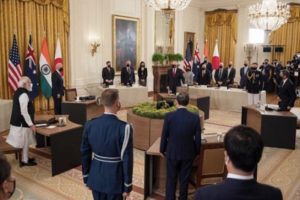 On September 24, President Biden hosted Prime Minister Scott Morrison of Australia, Prime Minister Narendra Modi of India, and Prime Minister Yoshihide Suga of Japan at the White House for the first-ever in-person Leaders’ Summit of the QUAD. The leaders released a Joint Statement which summarised their dialogue and future course of action. The regional security of the Indo-Pacific and strong confidence in the ASEAN remained on the focus along with response to the Pandemic.
On September 24, President Biden hosted Prime Minister Scott Morrison of Australia, Prime Minister Narendra Modi of India, and Prime Minister Yoshihide Suga of Japan at the White House for the first-ever in-person Leaders’ Summit of the QUAD. The leaders released a Joint Statement which summarised their dialogue and future course of action. The regional security of the Indo-Pacific and strong confidence in the ASEAN remained on the focus along with response to the Pandemic. 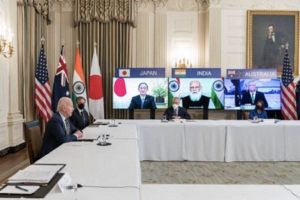 The QUAD Vaccine Partnership was announced at the first QUAD Summit on 12 March 2021 where QUAD countries agreed to deliver 1.2 billion vaccine doses globally. The aim was to expand and finance vaccine manufacturing and equipping the Indo-Pacific to build resilience against Covid-19. The launch of a senior-level QUAD Vaccine Experts Group, comprised of top scientists and officials from all QUAD member governments was also spearheaded.
The QUAD Vaccine Partnership was announced at the first QUAD Summit on 12 March 2021 where QUAD countries agreed to deliver 1.2 billion vaccine doses globally. The aim was to expand and finance vaccine manufacturing and equipping the Indo-Pacific to build resilience against Covid-19. The launch of a senior-level QUAD Vaccine Experts Group, comprised of top scientists and officials from all QUAD member governments was also spearheaded.  Although the Tsunami Core group had to be disbanded on fulfilment of its purpose, however the quadrilateral template that formed remained intact as a successful scaffolding of four countries, as stated by authors Patrick Gerard Buchan and Benjamin Rimland in their diplomatic brief about QUAD ( you can access the brief at
Although the Tsunami Core group had to be disbanded on fulfilment of its purpose, however the quadrilateral template that formed remained intact as a successful scaffolding of four countries, as stated by authors Patrick Gerard Buchan and Benjamin Rimland in their diplomatic brief about QUAD ( you can access the brief at 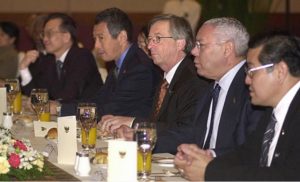 Secretary of State Colin Powell stated that the Core Tsunami Group was to be disbanded and folded and clubbed with the broader United Nations led Relief Operations. In a Tsunami Relief Conference in Jakarta, Secretary Powell stated that
Secretary of State Colin Powell stated that the Core Tsunami Group was to be disbanded and folded and clubbed with the broader United Nations led Relief Operations. In a Tsunami Relief Conference in Jakarta, Secretary Powell stated that 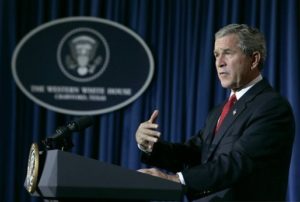 Soon after the Earthquake and Tsunami crisis, humanitarian reliefs by countries, viz., US, India, Japan, and Australia started to help the 13 havoc-stricken countries. The US initially promised $ 35 Millions in aid. However, on 29
Soon after the Earthquake and Tsunami crisis, humanitarian reliefs by countries, viz., US, India, Japan, and Australia started to help the 13 havoc-stricken countries. The US initially promised $ 35 Millions in aid. However, on 29 At 7:59AM local time, an earthquake of 9.1 magnitude (undersea) hit the coast of Sumatra, an Indonesian island. As a result of the same, massive waves of Tsunami triggered by the earthquake wreaked havoc for 7 hours across the Indian Ocean and to the coastal areas as far away as East Africa. The infamous Tsunami killed around 225,000 people, with people reporting the height of waves to be as high as 9 metres, i.e., 30 feet. Indonesia, Srilanka, India, Maldives, Thailand sustained horrendously massive damage, with the death toll exceeding 200,000 in Northern Sumatra’s Ache province alone. A great many people, i.e., around tens of thousands were found dead or missing in Srilanka and India, mostly from Andaman and Nicobar Islands of Indian territory. Maldives, being a low-lying country, also reported casualties in hundreds and more, with several non-Asian tourists reported dead or missing who were vacationing. Lack of food, water, medicines burgeoned the numbers of casualties, with the relief workers finding it difficult to reach the remotest areas where roads were destroyed or civil war raged. Long-term environmental damage ensued too, as both natural and man-made resources got demolished and diminished.
At 7:59AM local time, an earthquake of 9.1 magnitude (undersea) hit the coast of Sumatra, an Indonesian island. As a result of the same, massive waves of Tsunami triggered by the earthquake wreaked havoc for 7 hours across the Indian Ocean and to the coastal areas as far away as East Africa. The infamous Tsunami killed around 225,000 people, with people reporting the height of waves to be as high as 9 metres, i.e., 30 feet. Indonesia, Srilanka, India, Maldives, Thailand sustained horrendously massive damage, with the death toll exceeding 200,000 in Northern Sumatra’s Ache province alone. A great many people, i.e., around tens of thousands were found dead or missing in Srilanka and India, mostly from Andaman and Nicobar Islands of Indian territory. Maldives, being a low-lying country, also reported casualties in hundreds and more, with several non-Asian tourists reported dead or missing who were vacationing. Lack of food, water, medicines burgeoned the numbers of casualties, with the relief workers finding it difficult to reach the remotest areas where roads were destroyed or civil war raged. Long-term environmental damage ensued too, as both natural and man-made resources got demolished and diminished.
No responses yet